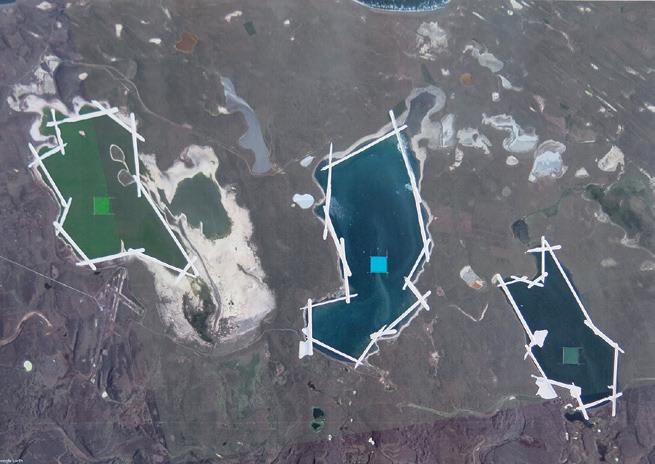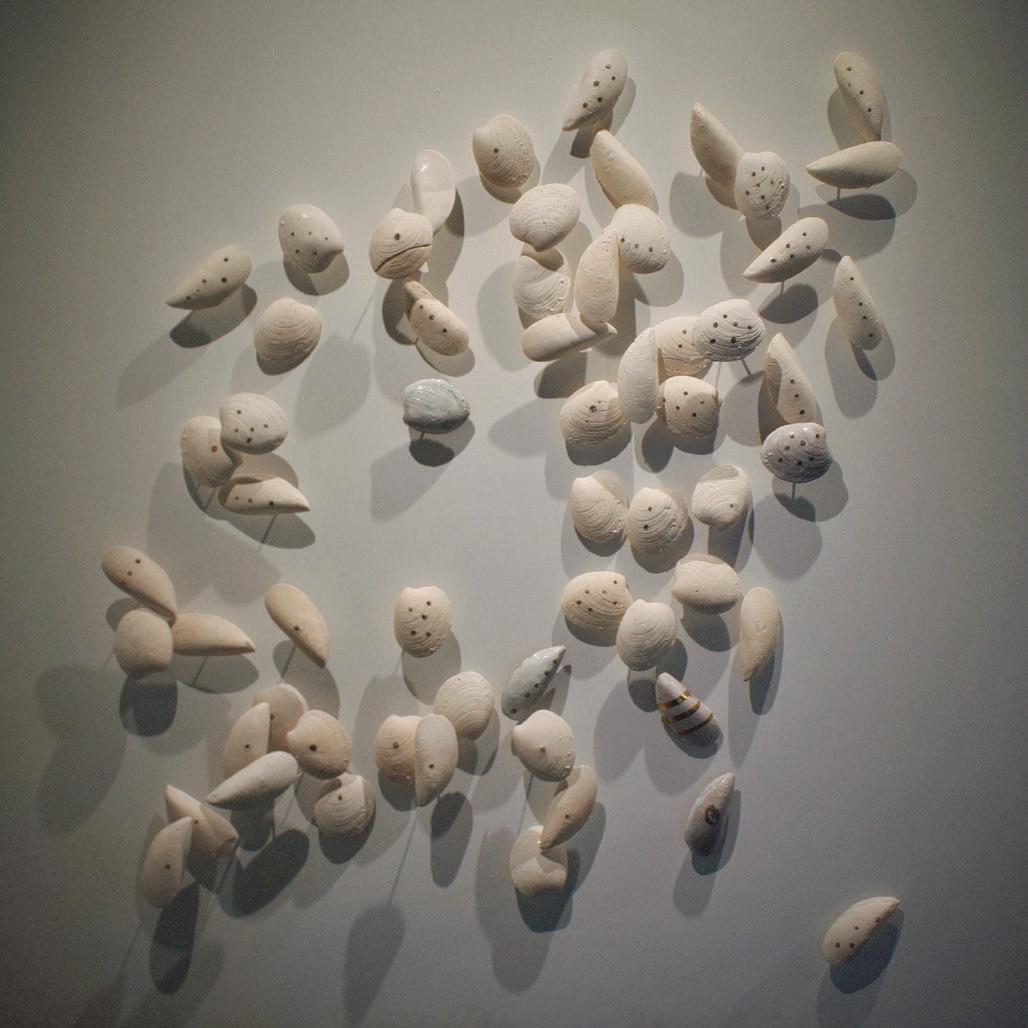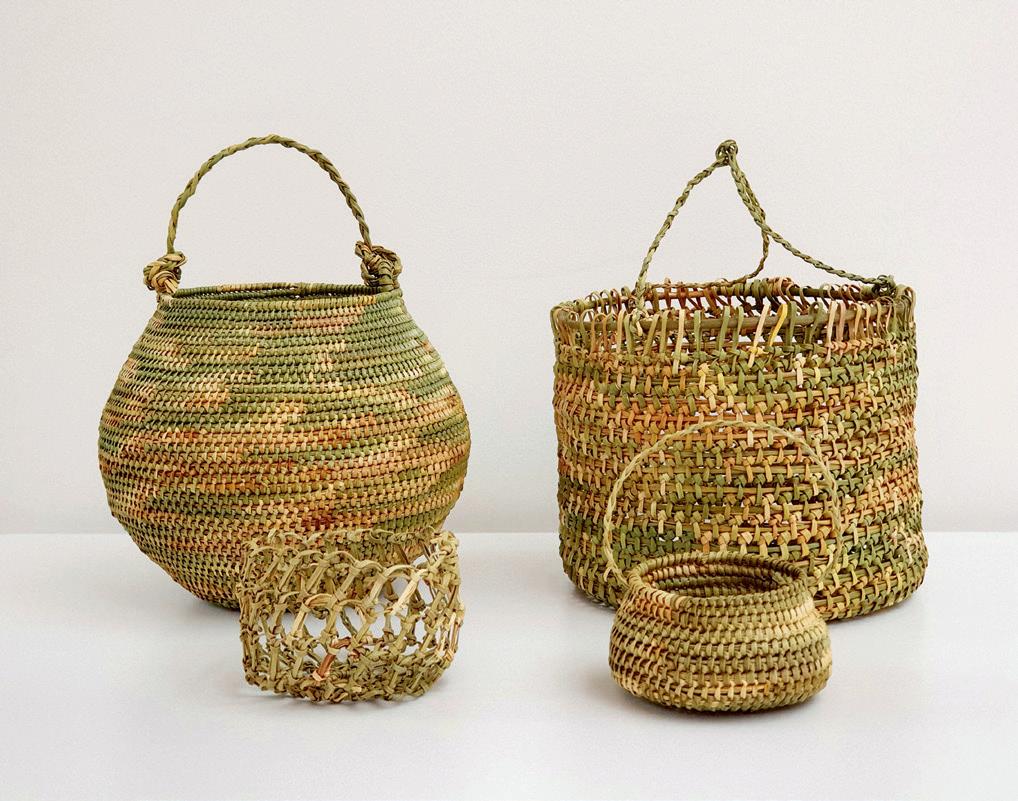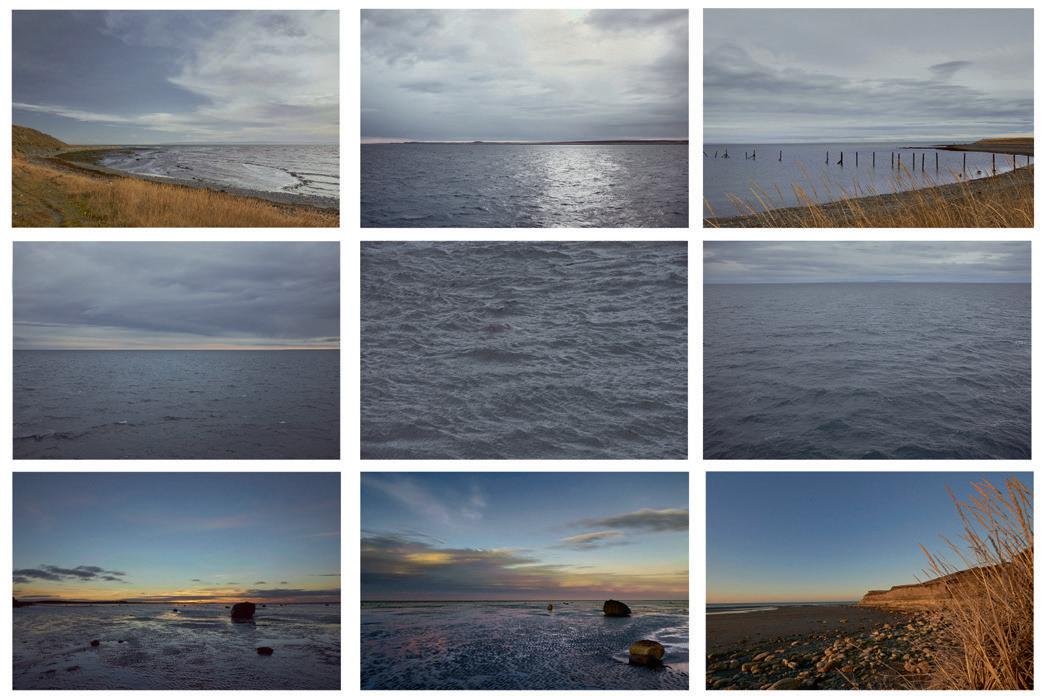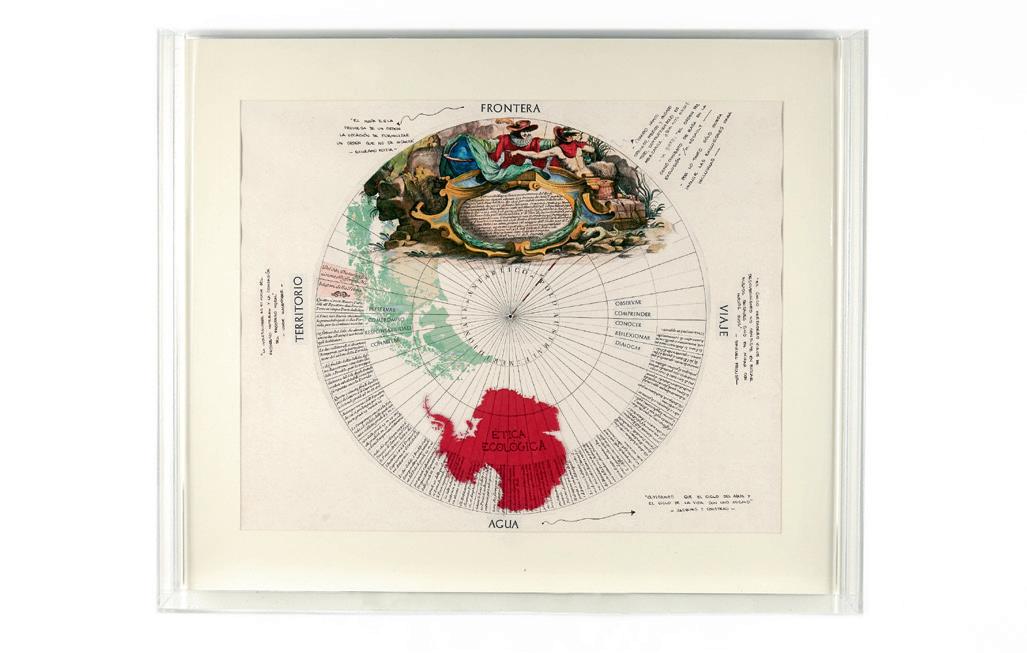
10 minute read
Tránsitos inocentes, zonificaciones e intersticios Anna Recasens
G e o g r a f í as personales como r Reconocer el territor io c o mo h ori zontal , múltiple , y diverso esistencia Escenarios de prácticas de bien comú n y d e b u en v ivir
Mapa del mundo sin fronteras para transitar libremente Perteneciente al proyecto “Imaginarios del tránsito. Construcción de imaginarios territoriales contrahegemónicos”
Advertisement
World map without borders to allow freedom of movement From to the project “Imaginaries of transit. Construction of counter-hegemonic territorial imaginaries”
ANNA RECASENS
ES
TRÁNSITOS INOCENTES, ZONIFICACIONES, E INTERSTICIOS
Según convenciones de la Ley Marítima Internacional, un “Tránsito inocente” es cuando una nave puede transitar por aguas territoriales no internacionales, durante un periodo determinado de tiempo o distancia, especialmente cuando no exista otro espacio por donde pasar, y siempre que se cumplan una serie de protocolos que garanticen la buena voluntad y actitud pacífica del sujeto del tránsito. En referencia a las aguas, ley y contexto territorial son indisociables y carecen de identidad propia por sí mismos, convirtiéndose el tránsito, en la práctica, en una forma de reconocimiento de límites, siendo a la vez agente en movimiento y lugar concreto en que se ubica, es decir, es el agente causal, y a la vez la acción causada. Así, el que viaja, el mismo acto de viajar, y aquello que posibilita el tránsito, no son más que distintas perspectivas de una misma acción. Una acción, que supondrá el movimiento desde un punto de partida hacia uno de llegada, siguiendo una serie de puntos/lugares (itinerario) que pueden inscribirse en una carta de navegación o mapa. Una acción que no corrobora que se haya estado en ningún sitio en particular, sino que se ha estado en todos (aunque sea por una fracción de segundo).
Viajar es una práctica especulativa orientada a generar relaciones en un contexto inmediato, y por un periodo relativamente breve. El valor de la transitoriedad, no reside en su naturaleza efímera –de hecho nada más continuo y constante que el tránsito–, se encuentra en establecer un espacio de intervención, un espacio sin límites del cual entrar y salir, y en el que cualquier práctica espacial provocará relaciones con el contexto que podrán transgredir la mirada fija y única. El itinerario, formado de unidades breves que se continúan en el espacio/tiempo, puede representar una experiencia infinita.
La paradoja del tránsito estriba en que cada momento es una realidad distinta, pasado y presente a la vez, y nos permite reconocer la identidad del contexto, tanto a través de su memoria, como de la posibilidad que supone la proyección de su presente. Como observadores, que no espectadores, nuestra mejor opción es orientar la mirada para
entender el contexto desde una perspectiva amplia, desde la interacción y el diálogo con el territorio mismo, entendiéndose este desde el concepto de site-specificity, con el cual, según Mirwon Kwon, “se pasa de entender el lugar como una serie de límites físicos a comprenderlo como una acumulación de parámetros discursivos de tipo histórico, social y cultural”, que nos va a permitir una mejor forma de habitarlo, desde una reflexión constante.
La idea del tránsito como forma de cuestionar y transgredir lecturas hegemónicas, que pretenden dirigir la mirada a puntos concretos y en tiempos definidos, nos sirve para replantear el territorio mismo, que ha dejado de ser un espacio en blanco para ser recorrido, compartido, y descubierto, a ser un espacio altamente zonificado, que solo podrá reconocerse en forma de múltiples “incursiones inocentes”. Así, el tránsito en la ciudad se verifica actualmente entre espacios privados y semipúblicos, quedando el espacio común (a modo de corredor internacional marítimo), suscrito a unos pocos espacios públicos, que a su vez, dejan de ser fluidos, para especializarse y normativizarse.
En un modelo de vida atendiendo a lo relacional, los espacios evolucionan con la comunidad y sus acciones, definiendo el espacio público como construcción colectiva en la que se articulan y convergen diferentes significados, memorias, historias, lenguajes, narraciones de lo individual y lo colectivo. Espacio en el que se redefinen constantemente los lugares: la vivienda, el monumento, la estación, el parque, la escuela, atendiendo a sus usuarios y sus necesidades; lugares que se interrelacionan con el transeúnte, y de ese modo se resignifican uno a otro constantemente.
En el contexto de la sociedad actual de tendencia globalizadora, abierta a colonizaciones culturales y determinada por sistemas de pensamiento marcados por la economía, las personas pierden derechos de ciudadanía para convertirse en consumidores que transitan por un espacio franquiciado que ya no les pertenece. Los cambios en el tejido social de la ciudad, la comercialización de los espacios lúdicos, la desaparición de espacios relacionales provoca que las comunidades se fragmenten y que desarrollos
urbanísticos unilaterales borren lugares e itinerarios que conformaban el material simbólico de estas. El ciudadano-consumidor validará los espacios acotados por definiciones oficiales, en una ciudad que vela más por la política turística que por la de sus habitantes y sus espacios.
Los nuevos entornos urbanos, discontinuos, en proceso de desterritorialización, fruto de la especulación, desplazamientos, y abandonos, generan espacios y dinámicas urbanas híbridas, en las que lo social se desdibuja. Estos espacios desatendidos, desconectados, sin relación con su entorno natural, hacen difícil la interacción personal, y la relación transeúnte - espacio transitado. Se hace evidente, analizando estos contextos, la necesidad de solucionar las desatenciones, de reencontrar el intersticio a partir del cual se pueda democratizar el espacio y devolverlo al usuario. Cada tránsito es una interacción independiente y original, no es solamente deambular, sino una forma de establecer relaciones recíprocas.
En un momento en el que se habla de aislamiento, precarización, y de los conflictos que se derivan, el tránsito ha de entenderse como un esfuerzo para restituir el derecho fundamental de las personas a la proximidad y la interacción con libertad, a ejercer autogobernanza, a resolver problemas en colectivo, y a recuperar bienes comunes. El necesario derecho a transitar, en medio de constante turbulencia y marginalización, precisa de una ruptura respecto a formas institucionales caducas, precisa recuperar el concepto de tránsito desde su capacidad de diálogo, transmisión de ideas y conocimientos, desde la posibilidad de innovación y transformación. Tránsito que ayude a proyectar los escenarios necesarios para atender a las distintas circunstancias de las personas desde lo relacional y cooperativo, y para construir nuevos espacios políticos que aborden los desafíos actuales (la gestión del agua, el cambio climático, la globalización, las fronteras, el territorio, la inmigración, el mercado...) desde la justicia ambiental y el post-crecimiento.
According to the conventions of International Maritime Law, an “innocent passage” is when a ship may transit through non-international territorial waters, during a certain period of time or distance, especially when there is no other space to pass through, provided that a series of protocols that guarantee the good will and peaceful attitude of the subject in transit are followed. With regard to waters, law and territorial context are inseparable and lack their own identity by themselves, turning transit, in practice, into a form of recognition of limits, being at one and the same time an agent in movement and a specific place in which the agent is located, that is, it is the causal agent, and at the same time the action caused. Thus, the traveller, the act of travelling, and that which makes transit possible, are no more than different perspectives of one single action, an action which involves movement from a point of departure to a point of arrival, following a series of points/places (itinerary) that may be inscribed on a navigational chart or map; an action that does not occur in any particular place, but that occurs in all (even for a fraction of a second).
Travel is a speculative practice aimed at generating relationships in an immediate context, and for a relatively short period of time. The value of the transitory does not reside in its ephemeral nature –in fact, nothing is more continuous and constant than transit– but is found in establishing a space of intervention, a space without limits from which to enter and exit, and in which any spatial practice will create relationships with the context that may transgress the fixed and unique gaze. The itinerary, made up of short units with continuity in space/time, can represent an infinite experience.
The paradox of transit is that each moment is a different reality, past and present at the same time, and it allows us to recognise the identity of the context, both through the memory of context and the possibility that the projection of its present entails. As observers, not spectators, our best option is to direct our gaze towards understanding the context from a broader perspective, from interaction and dialogue with the territorial context itself, interpreting this through the concept of site-specificity, which, according to Mirwon Kwon “passes from an understanding of place as a series of physical limits to understanding it as an accumulation of discursive parameters of an historical, social and cultural kind”, which allows us a better way of living within it, based on a constant critical reflection.
The idea of transit as a way of interrogating and transgressing hegemonic interpretations which seek to direct our gaze to specific points and at defined times, helps us to reconsider territorial contexts in themselves, which are no longer blank spaces that may be travelled, shared, and discovered, which have become highly zoned spaces, spaces which may only be reconnoitred in the form of multiple “innocent incursions”. Thus, transit in the urban context may nowadays only take place between private and semi-public spaces, reducing the areas for common use (like a kind of international maritime corridor) to a few public spaces, which in turn cease to be fluid, becoming specialised and standardised.
In a modus vivendi which responds to building human relations, spaces evolve along with the community and its activities, establishing public space as a collective construction in which various meanings, memories, stories, languages, and individual and collective narratives meet and converge. Areas in which specific locations are under constant redefinition; houses, monuments, stations, parks, schools, responding to users and their needs; areas which interrelate with everyday pedestrians passing by, mutually changing and finding meaning together.
In the context of present-day society’s trend towards globalisation, open to cultural colonisation and determined by systems of thought marked by economics, people are losing their rights as citizens, becoming consumers who pass through a franchised space that no longer belongs to them. Changes in the urban social fabric, the commercialisation of recreational spaces and the disappearance of relational spaces cause communities to fragment, while unilateral urban developments erase locations and the pathways that comprised their symbolic material. The citizen-consumer will legitimise those spaces enclosed by official definitions, in a city that pays more attention to its policies regarding tourism than those regarding its residents and the spaces where they meet and interact.
The new urban environments, discontinuous, in a process of deterritorialisation as a result of land and property speculation, displacement, and abandonment, generate spaces and hybrid urban dynamics in which social affairs have become blurred. These neglected, disconnected spaces, unrelated to their natural environment, make personal interaction, and the relationship between passers-by and the space through which they transit, increasingly difficult. The need to resolve the problem of urban neglect, and to rediscover the interstice through which urban space may be democratised and returned to users, has become obvious in every analysis of these contexts. Each transit is an independent and original interaction; not just a wandering, but a means of establishing a relationship of reciprocity.
In these times, when there is talk of isolation, precariousness, and the conflicts arising from these conditions, transit, the passage, must be understood as an effort to restore the fundamental citizens’ right to have easy and immediate access to basic amenities and to interact with freedom, to exercise self-governance, to solve problems collectively, and to recover common goods. The necessary right to travel, in the midst of constant turbulence and marginalisation, requires a clean break with outdated institutional forms. The concept of transit must be recovered, based upon its power to encourage dialogue and the transmission of ideas and knowledge, based upon the possibility it represents to encourage innovation and transformation. A kind of transit that may be used to help design much-needed scenarios, based upon interrelationships and cooperation, to deal with citizens’ varying circumstances, and to help build new political discourses that address current challenges (water management, climate change, globalisation, borders, land-use, immigration, the market, etc.) based upon environmental justice and post-growth.


